

Hello everyone,
You might know that I have been living in the capital city, New Delhi in India and it has many places to visit. Delhi is one of the major cities visited by foreigners on their trips because of its rich cultural history.
You will find many historical monuments in Delhi. One such monument is the infamous Qutub Minar also spelt Qutb or Qutab Minar. It is one of the highest minarets in the entire world.
Qutub Minar is a huge complex that has various monuments, of course, the minaret being the primary focus of attention. The complex has arguable the oldest mosque present in India.

History
Here is the Wikipedia article that states the following about its history.
The Qutb Minar was built over the ruins of the Lal Kot, the citadel of Dhillika. Qutub Minar was begun after the Quwwat-ul-Islam Mosque, which was started around 1192 by Qutb-ud-din Aibak, first ruler of the Delhi Sultanate. It is usually thought that the tower is named for Qutb-ud-din Aibak, who began it. It is also possible that it is named after Khwaja Qutbuddin Bakhtiar Kaki a 13th-century Sufi saint because Shamsuddin Iltutmish was a devotee of his.
The mosque was built after demolishing several Hindu and Jain Temples on the site. You can see the temple pillars still standing in the complex.

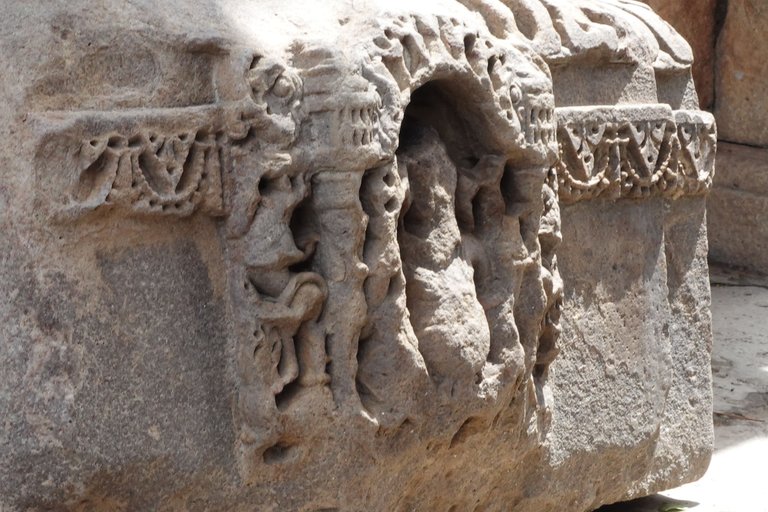
Disfigured statue of Lord Ganesha at the complex

Architecture
The Qutub Minar is a five-storey building built from red and grey sandstones. There is a spiral staircase leading up to the top of the minaret. And as you can see the size of each storey varies and the tower tapers as it goes up. The top 2 stories look completely different from the rest of the others due to varying architects and the time in which they were completed.

Let's take a look at some of the notable structures inside the complex.
Alai Darwaza
Alia Darwaza is the main gateway from the southern side to the Quwwat-ul-Islam mosque. It is decorated with carefully carved red sandstone and white marble plates that give a nice contrast of red and white to the structure.
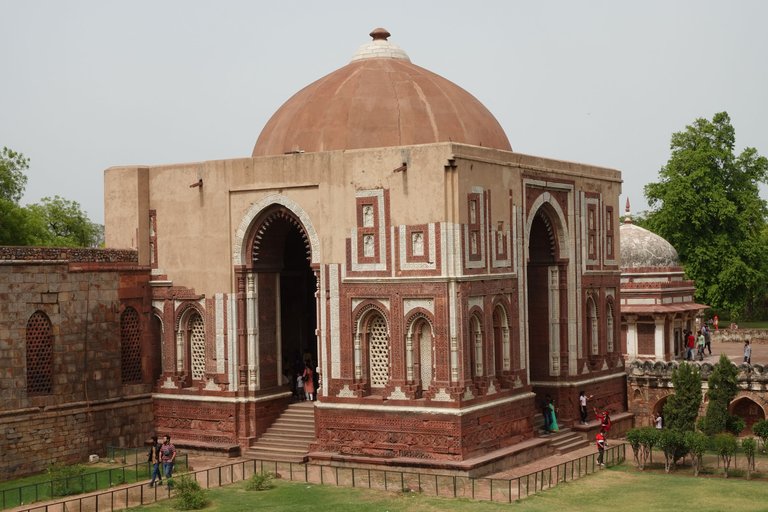
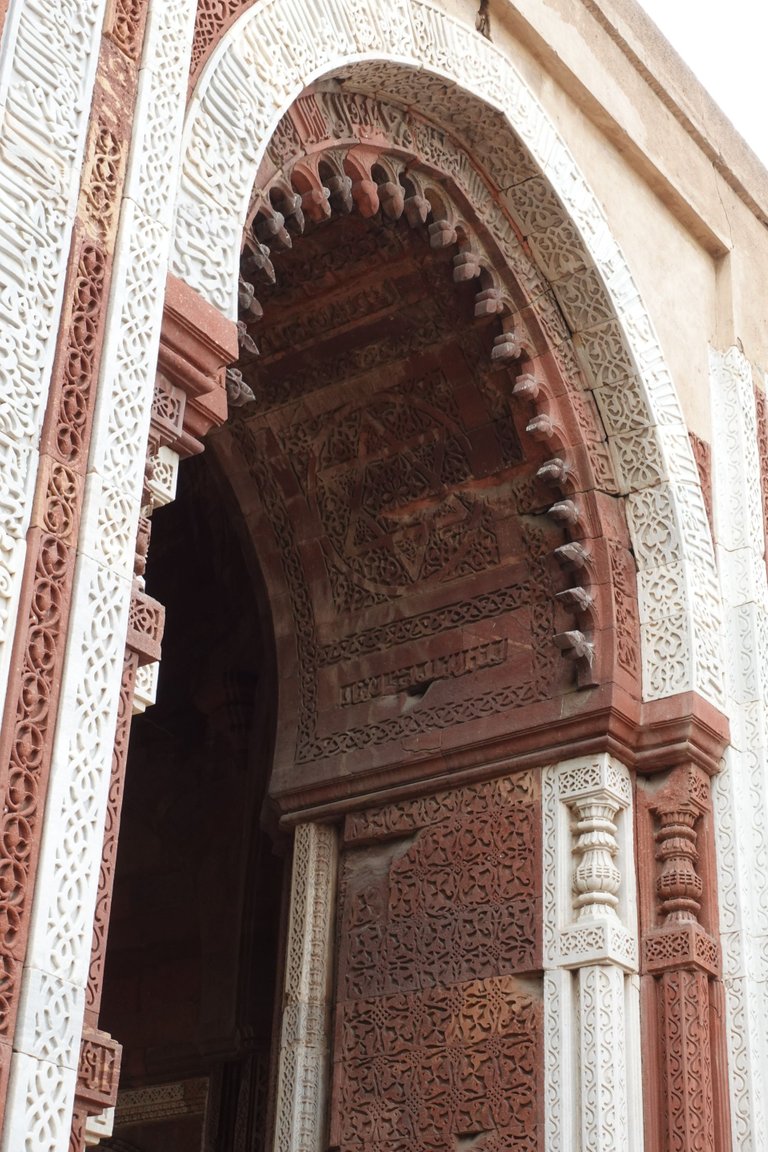

Quwwat-ul-Islam Mosque
It was one of the first mosques in India. The Archeological Survey of India (ASI) clearly states that it was built by damaging the 27 Hindu and Jain Temples present here. They were even used as a building material.
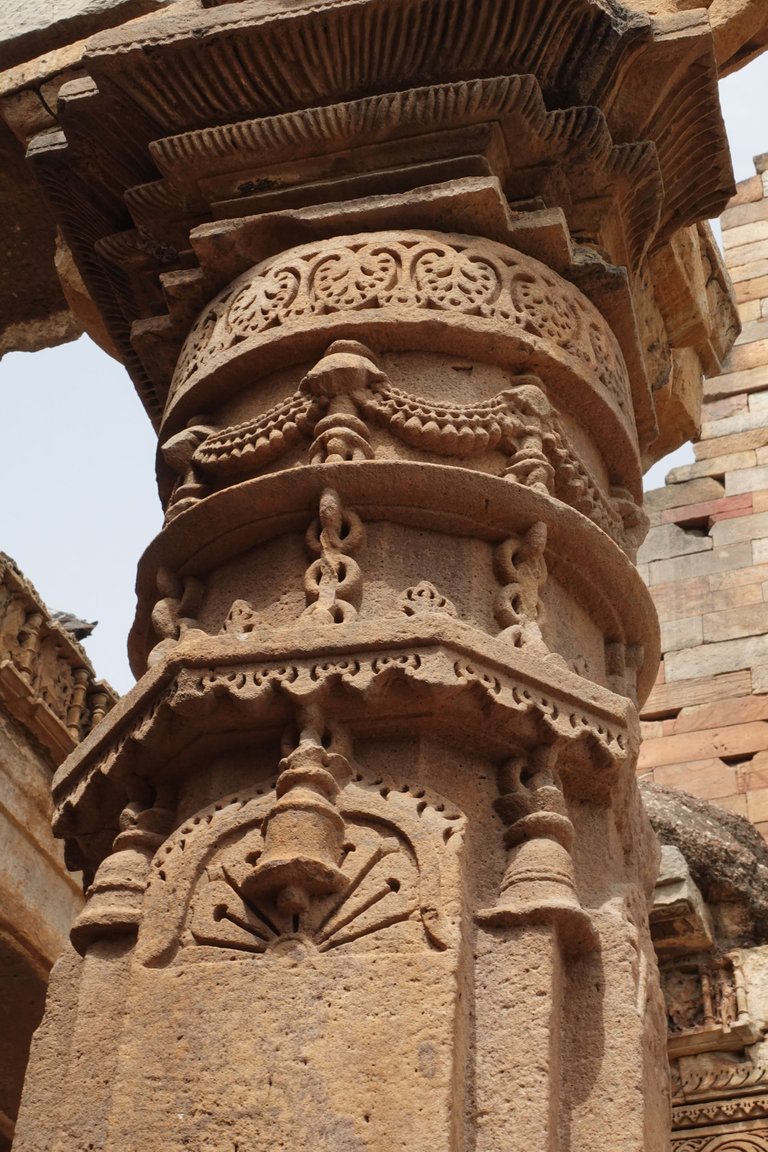
The ancient ruins of twenty-seven Jain and Hindu temple complex over which the mosque was contructued
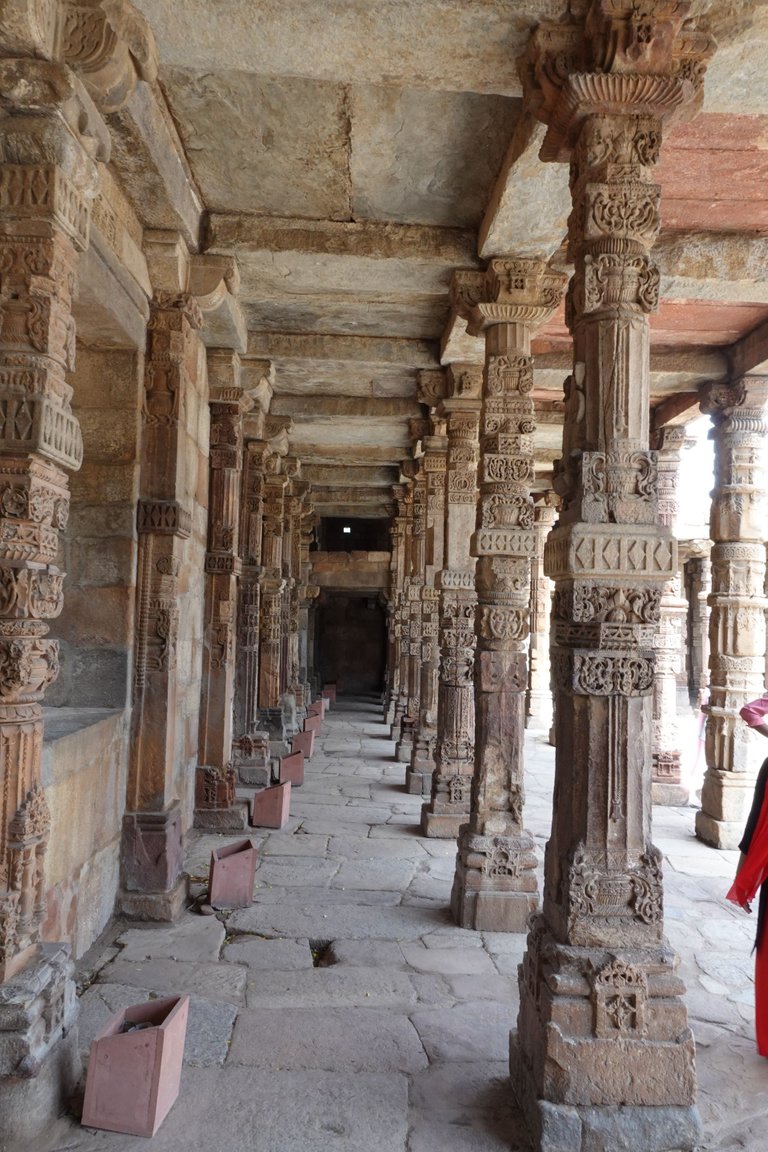
The ancient ruins of twenty-seven Jain and Hindu temple complex over which the mosque was contructued

Iron Pillar
One of the interesting structures is the Iron Pillar which predates the whole complex standing in this courtyard. It is believed to be transported here from somewhere else and there is an inscription on it that tells us a little bit about its origin.
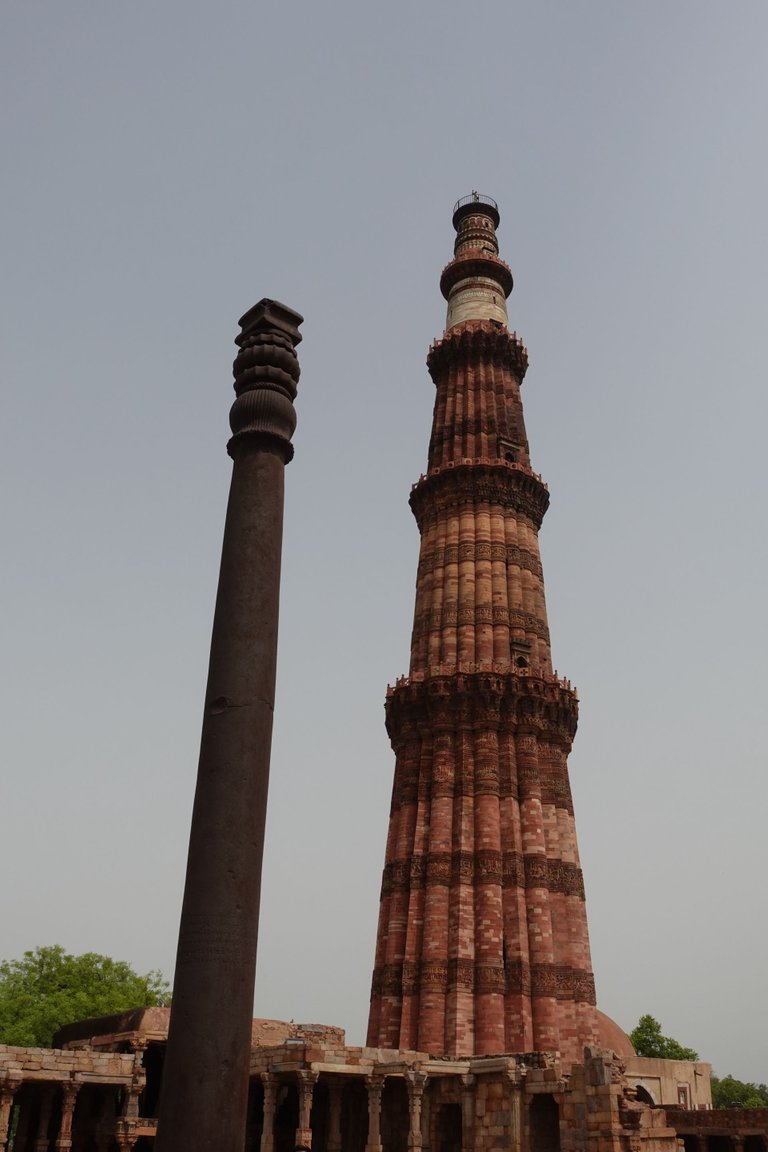
The iron pillar is one of the world's foremost metallurgical curiosities. The pillar, 7.21-metre high and weighing more than six tonnes, was originally erected by Chandragupta II Vikramaditya (375–414 AD) in front of a Vishnu Temple complex at Udayagiri around 402 AD, and later shifted by Anangpal in the 10th century CE from Udaygiri to its present location. Anangpal built a Vishnu Temple here and wanted this pillar to be a part of that temple. source
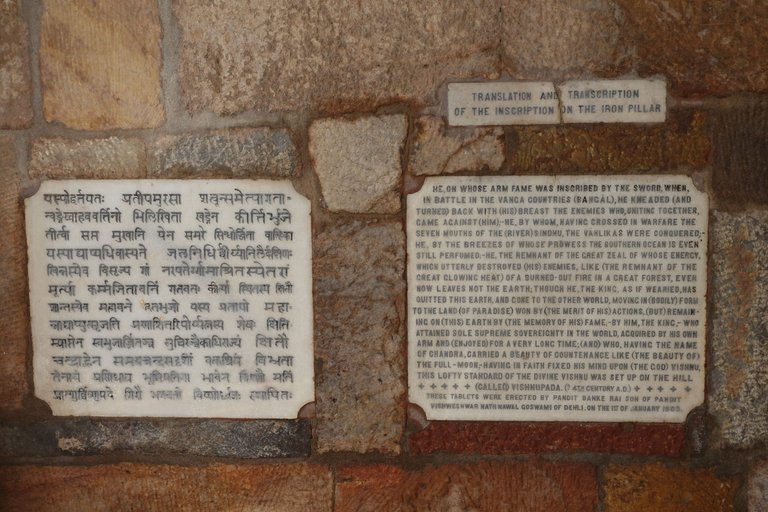
Translation of the inscription found on the pillar

Tomb of Iltutmish

Tomb of Imam Zayid
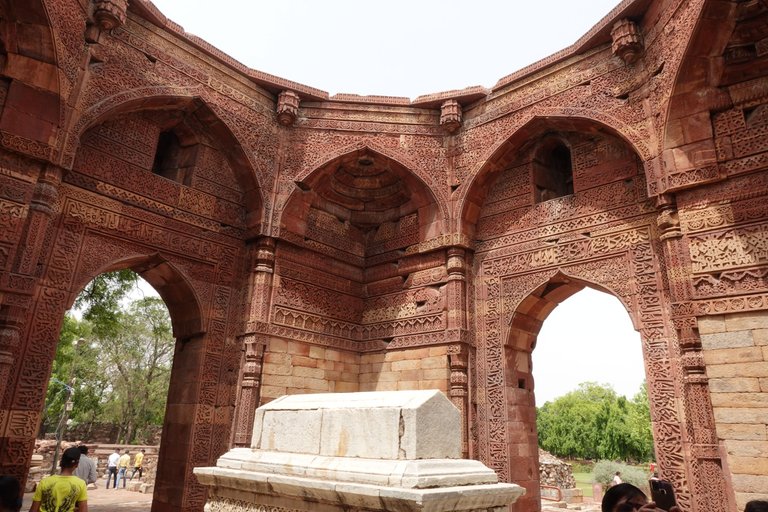
Dome has fallen from the the tomb

Qutub Minar

View of Qutub minar from near the base
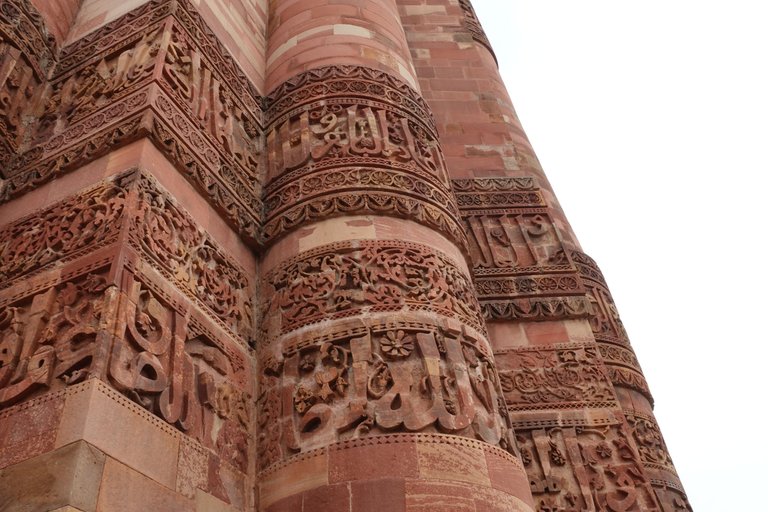
Quranic inscription on the base of the minaret
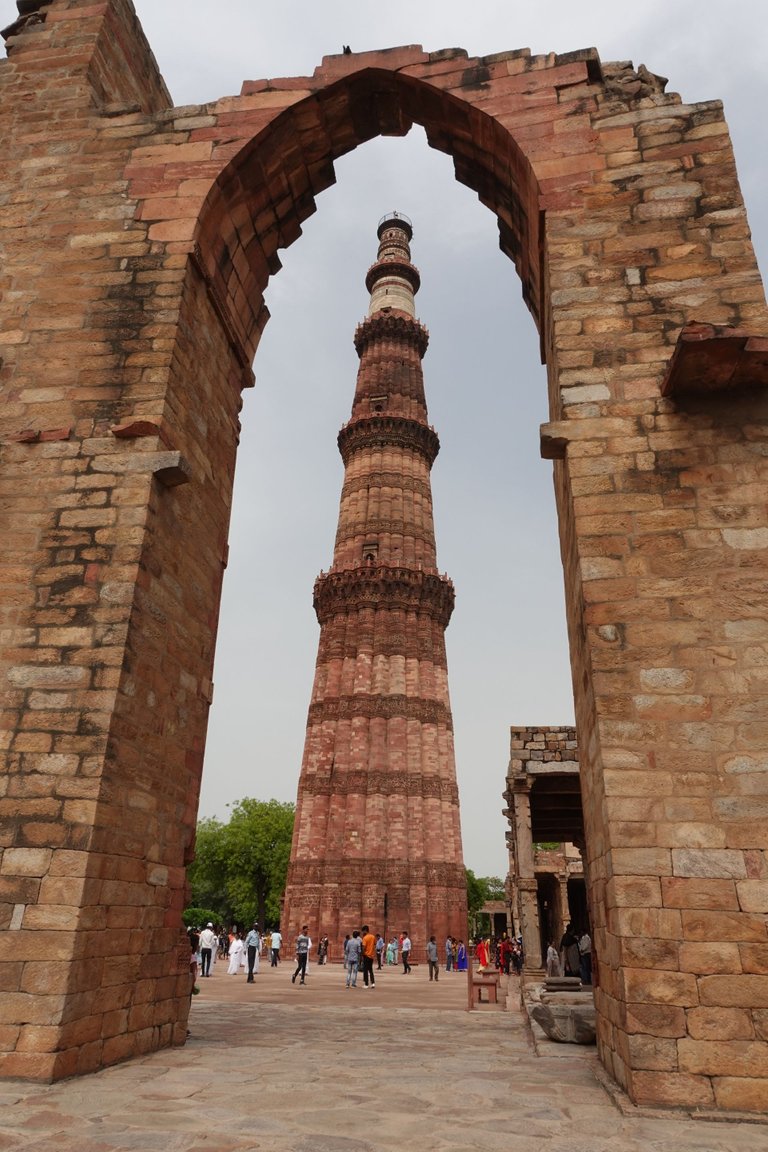
Qutub Minar through an arch

There are many small structures built later on and structures that have been demolished and were part of the original complex can also be seen.
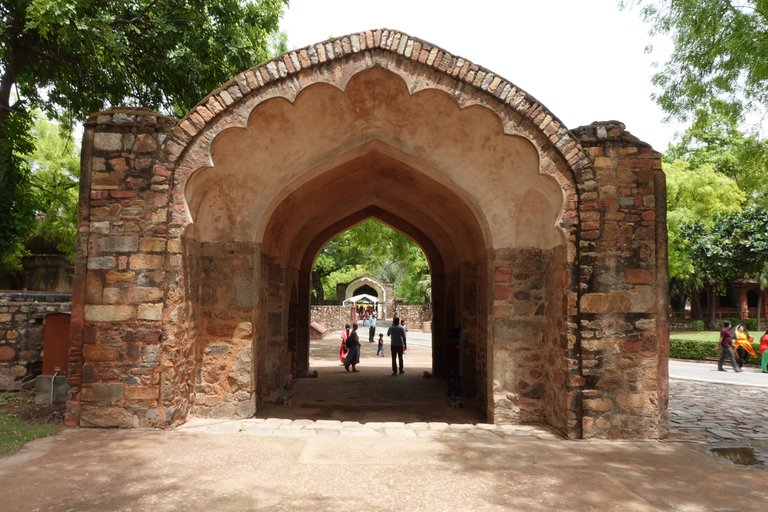
Entry gateway to the complex
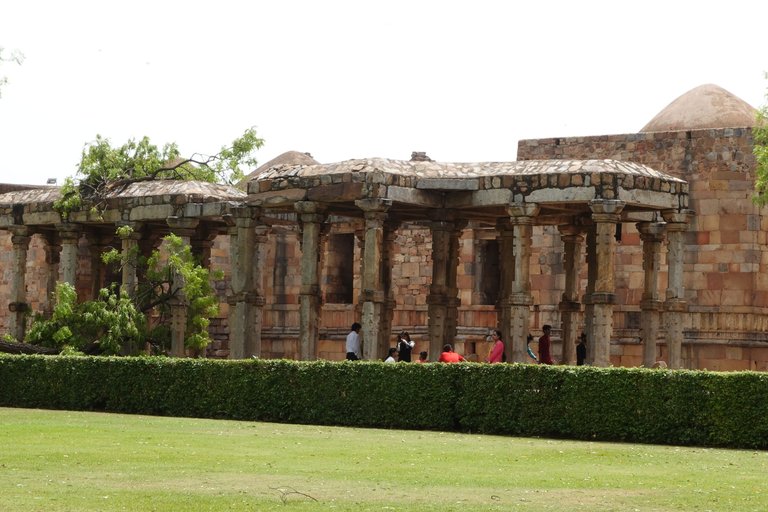
Few standing remains of the Hindu and Jain temples
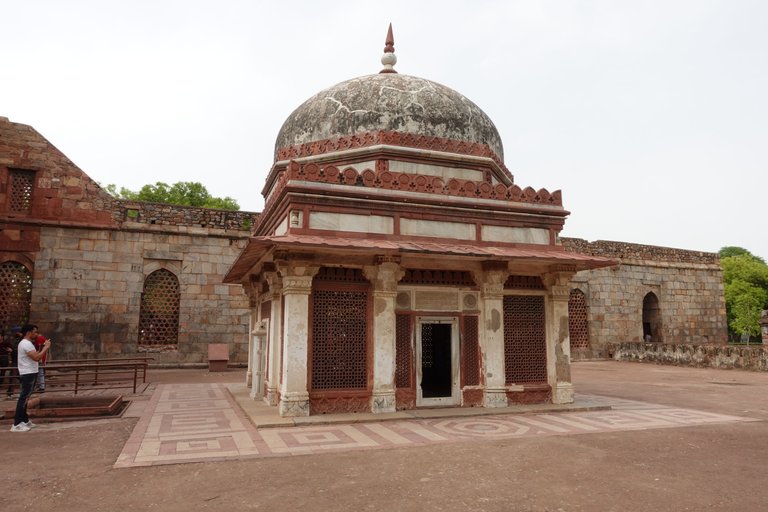

Tomb of Imam Zamid
It is a 16th-century tomb of Mohammad Ali (Imam Zamid) found in the complex. It was built by Ali himself during the reign of the Mughal emperor Humayun.

Tomb of Imam Zamid

The whole complex is a large complex with many structures, here I have presented the most of them. A few could have remained hidden from the sites. It has been a trip of learning and gave so much knowledge about the history and architectural sense of this historical period. It is maintained quite well by the Archeological Survey of India as it is one of the World Heritage Sites. I am sure everyone will find something here to get impressed.
Thanks for reading...

Note:
- All the images are courtesy of me @acryptomaster.
- Beautiful Text dividers are from @cryptosharan.






